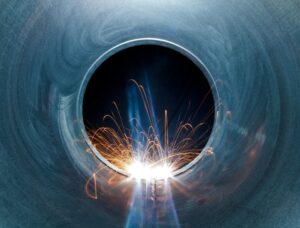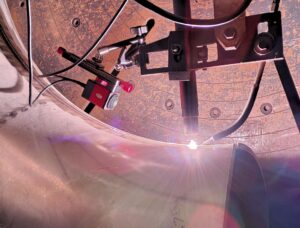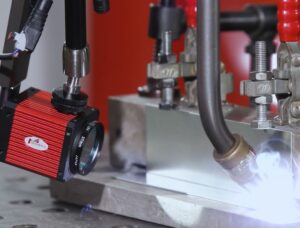Welding is a crucial process in many industries, from construction to automotive repair, involving the fusion of metals through heat and pressure. For beginners, understanding the basics of welding is essential. A solid foundation ensures strong, reliable joints and helps avoid common weld defects that could compromise your work. In this blog, explore the basics of welding, including common methods like MIG, TIG, and stick welding. Discover how welding cameras ensure precision and quality in every weld. Perfect for beginners and professionals alike.
The 4 Most Common Types of Welding
Welding is a versatile technique, with various methods catering to different materials and applications:
- Shielded Metal Arc Welding (SMAW): Also known as stick welding, this method uses an electric current to form an arc between the stick electrode and the metals being joined. It’s popular in construction due to its simplicity and versatility. It’s particularly useful for outdoor work or welding in areas with limited access, making it a staple for many welders.
- Gas Metal Arc Welding (GMAW): This includes MIG (Metal Inert Gas) welding, which uses a wire electrode and a shielding gas to create the weld. It’s known for its speed and ease of use, making it ideal for industrial applications. The continuous wire feed allows for long stretches of welding, which is perfect for large-scale projects.
- Gas Tungsten Arc Welding (GTAW): Also known as TIG (Tungsten Inert Gas) welding, this method uses a tungsten electrode and a shielding gas to produce high-quality welds. It’s great for welding thin materials and requires a high level of skill. TIG welding is often used in industries where precision is paramount, such as aerospace and automotive manufacturing.
- Flux-Cored Arc Welding (FCAW): Similar to MIG welding, but uses a special tubular wire filled with flux, which makes it effective for welding thicker materials and suitable for outdoor work due to its resistance to wind. FCAW is known for its efficiency in joining heavy sections and is commonly used in shipbuilding and construction.
The Importance of Welding Monitoring
Using a welding camera or weld monitor can be crucial, especially for beginners. These tools help maintain precision by providing a real-time view of the weld pool, ensuring that the weld is forming correctly and is free from defects. Real-time monitoring allows for immediate adjustments, which is vital in preventing flaws that could lead to structural weaknesses.
Discover the key to flawless welds with Mecaweld welding monitoring cameras. Our cameras ensure precision by monitoring welds in real-time, detecting imperfections, and allowing for immediate adjustments. Whether you’re working on a simple project or a complex structure, the right monitoring tools can make all the difference.
Conclusion
Understanding the basics of welding, including the various types and the importance of weld monitoring, is essential for producing high-quality welds. By familiarizing yourself with these fundamentals and using the right tools, you can avoid common weld defects and ensure strong, durable joints in your projects.
Elevate your welding game with cutting-edge technology. Contact us for more. Whether you’re a seasoned professional or just starting out, Mecaweld’s innovative solutions can help you achieve the best results in your welding endeavors
Contact us now and let’s discuss how we can boost efficiency, weld quality, and safety in your operations.



